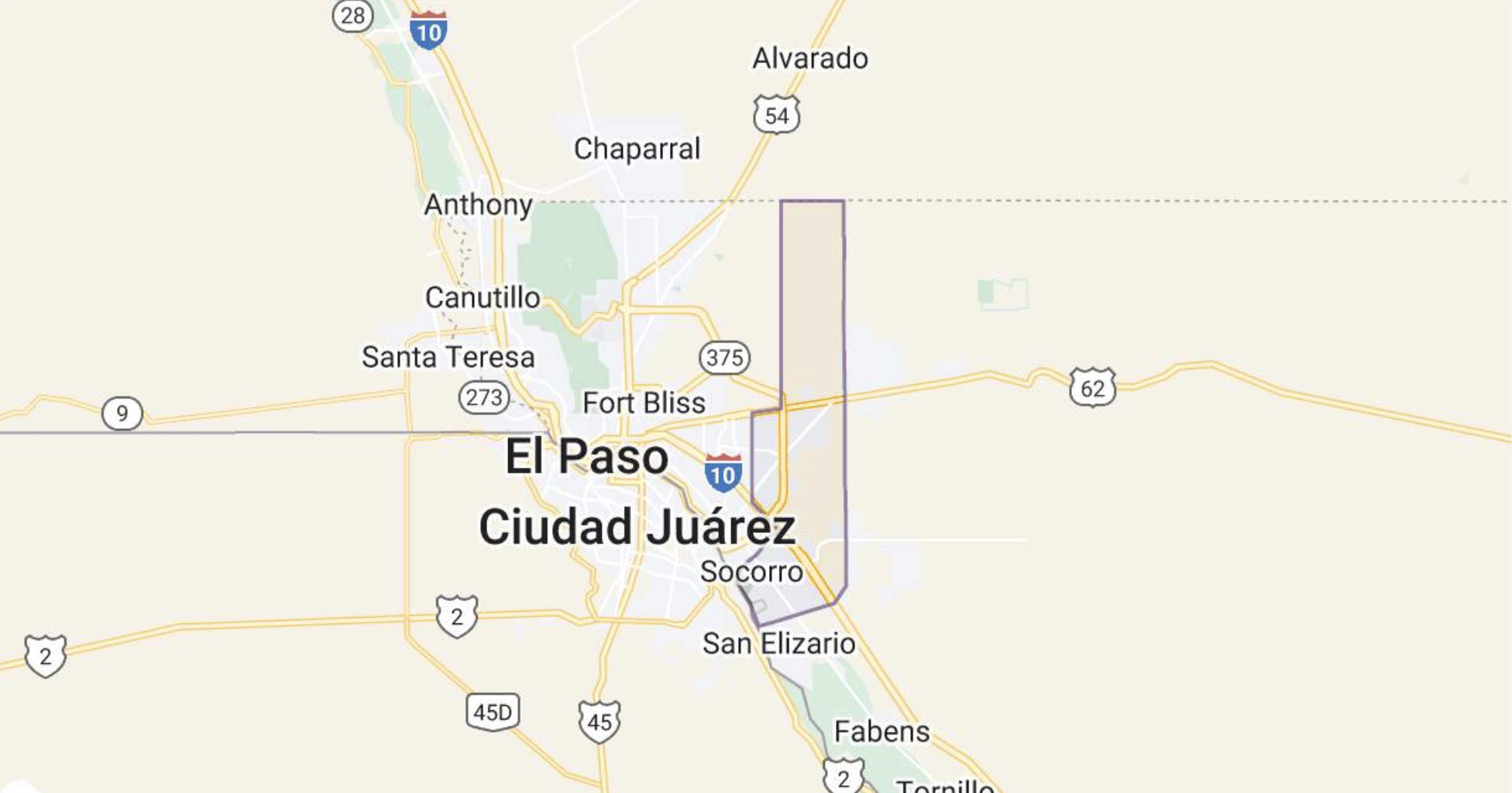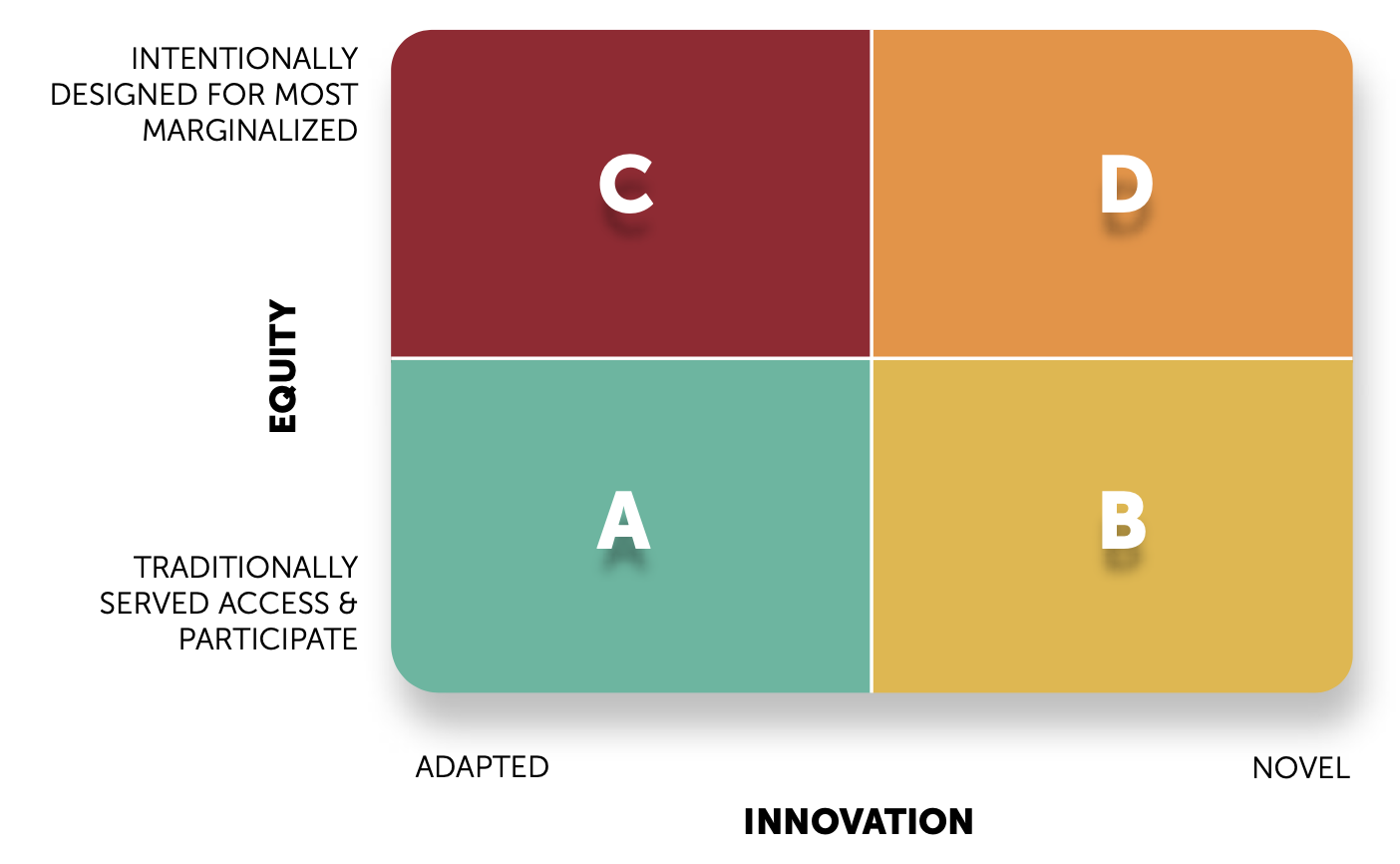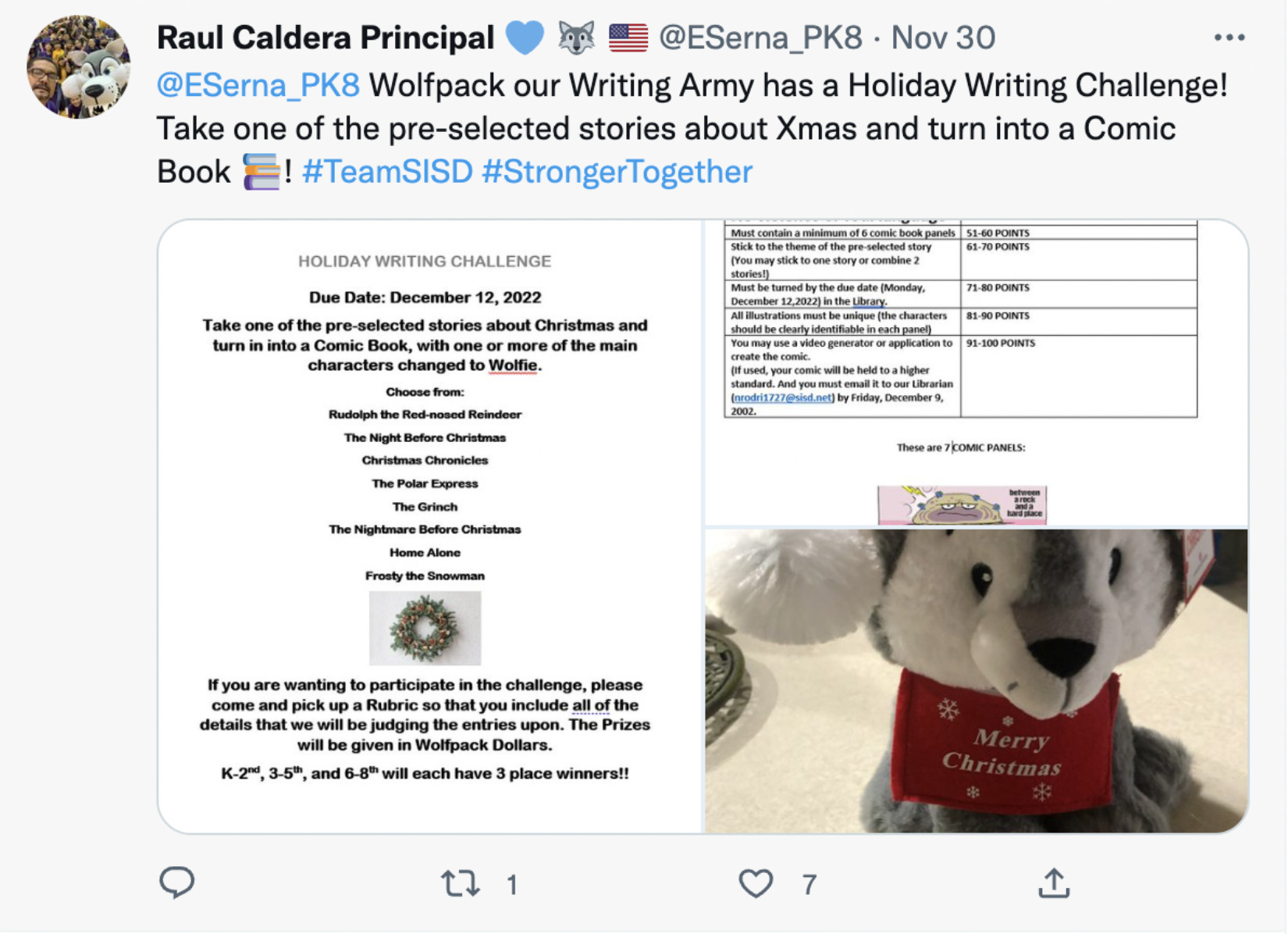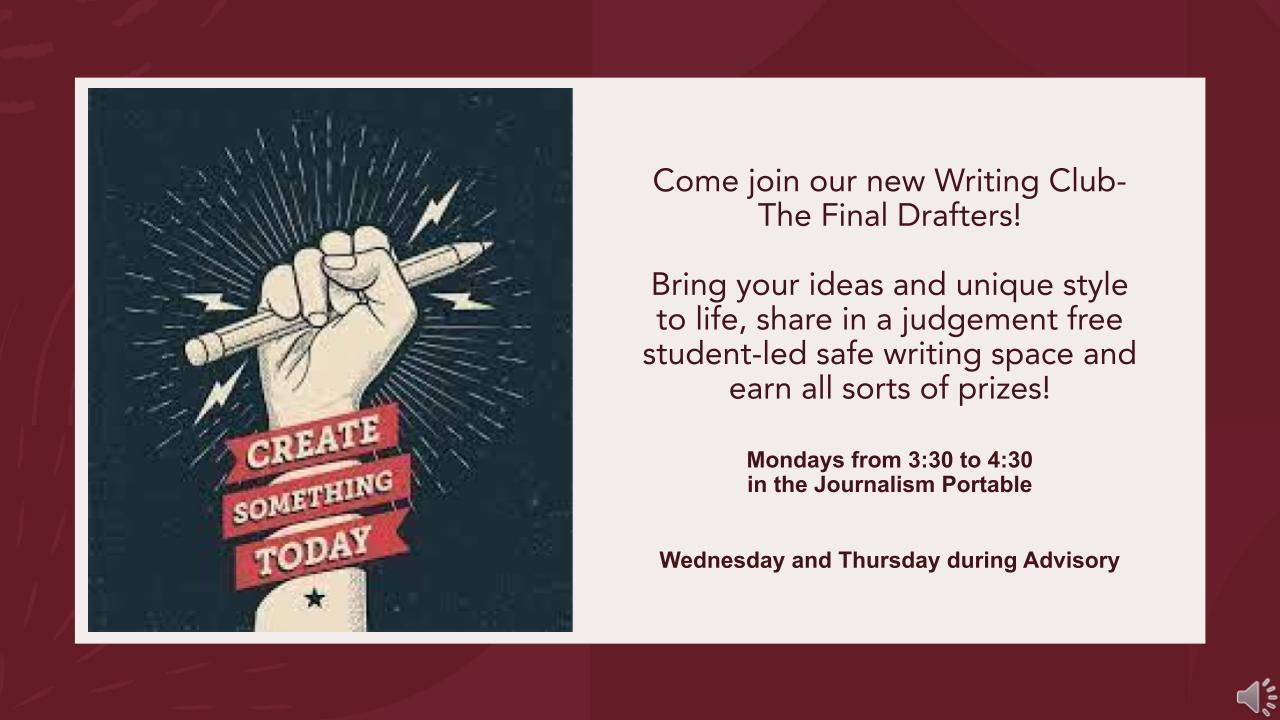
Socorro District Map
During the 2020-21 school year, 69.7% of students were classified as economically disadvantaged, 25% of students were classified as English Language Learners and 11.4% came from military-connected families. The class of 2020 had a 91.8% graduation rate. Graduates earned $61.8 Million in scholarships and grants.
Connect & Commit
During the first phase of the Inclusive Innovation process, the team focused on building relationships and trust. The team mapped local assets to ensure they were elevating the wealth of expertise available from community members.
The team focused on developing a team charter in order to establish their collective purpose, goals, and objectives. They focused on what co-decision-making and co-leadership could look like throughout the process and defined ways of working together that center equity.
Sample Equity Commitments
Inquire & Investigate
In the next phase of Inclusive Innovation, the team developed their skills as co-researchers by gathering and analyzing data to deeply understand the challenge. The team started digging into the challenge by hypothesizing root causes. After generating a long list, they prioritized the factors that seemed most relevant. To test their hypotheses, team members developed focus group questions and conducted focus groups with key community members. Students spoke with current students and alumni, teachers spoke with colleagues, and parents and community members spoke with peers. The team then analyzed the community input and identified three root causes that seemed most relevant.
| Challenge Area | Choice | Relevance | Trust |
|---|---|---|---|
|
Root Cause |
Students feel disconnected from prescribed, structured writing and want more opportunities for free writing. |
Students want to write about topics they’re interested in and use diverse forms of expression. |
Students need trusting relationships with teachers to counteract the fear of being judged and previous adverse experiences. |
| Challenge Area |
Root Cause |
|---|---|
| Choice |
Students feel disconnected from prescribed, structured writing and want more opportunities for free writing. |
| Relevance |
Students want to write about topics they’re interested in and use diverse forms of expression. |
| Trust |
Students need trusting relationships with teachers to counteract the fear of being judged and previous adverse experiences. |
Teachers need innovative strategies to help them design authentic writing opportunities that support and nurture scholars’ creative expression through a medium of their choice. Scholars need opportunities to use their distinctive creativity to enhance their learning through writing across all content areas.
| Target Outcome | Confidence | Engagement | Participation |
|---|---|---|---|
|
Proposed Measure |
Scholars demonstrate increased confidence as writers. |
Scholars take up opportunities for authentic, creative expression through writing. |
Scholars write across the content areas. |
| Target Outcome |
Proposed Measure |
|---|---|
| Confidence |
Scholars demonstrate increased confidence as writers. |
| Engagement |
Scholars take up opportunities for authentic, creative expression through writing. |
| Participation |
Scholars write across the content areas. |
Once they were clear on who they were designing for and understood these learners’ strengths, wants, and needs, they brainstormed and prioritized solution concepts in initial design studios where they were encouraged to stretch their concepts to maximize innovation and equity.

They then shared their concepts with fellow students and educators through a series of focus groups. Using the data from these focus groups, they identified the solution concepts with the greatest promise and chose one or more solutions to develop. Development involved drafting, testing, and revising versions of the solutions to create prototypes ready for implementation. See the solutions they designed below.
Ernesto Serna Fine Arts Academy (previously Ernesto Serna K-8 School)
Student ambassadors, selected from the principal’s student advisory group, created and launched five small writing groups based on their interests:
The writers collectively call themselves Serna’s Writing Army. Since Serna is a K-8 school, the original groups included students from varying grade levels. The student ambassadors provided daily writing prompts and encouraged older students to support younger students attending the sessions. The ambassadors recruited students via morning announcements and hosted monthly writing contests to encourage writing throughout the school.
As the school year was ending, the principal received a grant to change the school to a fine arts academy. With that award, he has provided Serna’s Writing Army with a dedicated classroom for hosting their writing groups and a media room with recording equipment for the newsletter group to share school-wide announcements.

SSG Manuel Puentes Middle School
Student ambassadors recruited by the lead teacher on the project met regularly after school to design the components of the writing groups prior to launching:
Once they had completed the design of these components, they presented their idea to the school faculty and encouraged teachers to send struggling writers to attend the sessions.
“Our goal is to make students that are not confident in writing and make them love [it] and to try our hardest to do that.”- Puentes Student.
When the writing groups launched, the Final Drafters hosted groups that focused on poetry, science fiction, romance, and horror. To encourage more students to participate, they followed the lead of their counterparts at Serna and started implementing monthly competitions. When we last spoke with the students toward the end of the school year, they consistently had 16 students attending the writing groups and planning the next steps for next year.

Explore the Strengthening Student Voice and Choice in Adolescent Writing project: